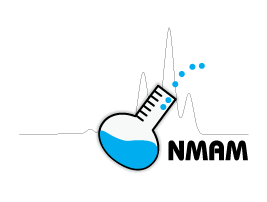Ethylene Glycol

Overview
CAS No. 107-21-1
Ethylene glycol (HOCH₂CH₂OH) is a colorless, syrupy liquid. It can harm the eyes, skin, kidneys, and respiratory system. Ethylene glycol can cause death if swallowed. Workers may be harmed from exposure to ethylene glycol. The level of exposure depends upon the dose, duration, and work being done.
Ethylene glycol is used in many industries. It is used as an antifreeze, in making polyester plastics, and for some manufacturing. Some examples of workers at risk of being exposed to ethylene glycol include the following:
- Factory workers involved in the manufacture of polyester
- Workers who use certain solvents
- Employees working with heating and cooling systems
- Factory workers exposed to certain manufacturing processes
NIOSH recommends that employers use Hierarchy of Controls to prevent injuries. If you work in an industry that uses ethylene glycol, please read chemical labels and the accompanying Safety Data Sheets for hazard information. Visit NIOSH’s page on Managing Chemical Safety in the Workplace to learn more about controlling chemical workplace exposures.
The following resources provide information about occupational exposure to ethylene glycol. Useful search terms for ethylene glycol include “1,2-dihydroxyethane,” “1,2-ethanediol,” “glycol,” “glycol alcohol,” and “monoethylene glycol.”
NIOSH Chemical Resources
Related NIOSH Resources
- NIOSHTIC-2 search results on ethylene glycol—NIOSHTIC-2 is a searchable database of worker safety and health publications, documents, grant reports, and journal articles supported in whole or in part by NIOSH.
- NIOSH Worker Health Study Summaries—NIOSH conducts research to prevent illnesses and injuries in the workplace. The NIOSH Worker Notification Program notifies workers and other stakeholders about the findings of these research studies.
- Emergency Response Safety and Health Database for Systemic Agent: Ethylene Glycol
Selected Publications
- Occupational Safety and Health Guideline for Ethylene Glycol—Occupational safety and health guidelines that summarizes pertinent information about ethylene glycol for workers, employers, and health professionals.
- Glycols No. 5523—Sampling and measurement data from NMAM, fourth edition.
- Ethylene Glycol No. 5500—Sampling and measurement data from NMAM, fourth edition.
Related Resources
- ATSDR Medical Management Guidelines (MMGs) for Ethylene Glycol
- ATSDR ToxFAQs for Ethylene Glycol
- ATSDR Toxicological Profile for Ethylene Glycol
- EPA Chemistry Dashboard: Ethylene Glycol
- EPA Hazard Summary: Ethylene Glycol
- EPA Integrated Risk Information System (IRIS): Ethylene Glycol
- NLM Haz-Map: Ethylene Glycol
- NLM TOXNET: Ethylene Glycol
- NTP-CERHR Monograph (Reproductive Health): Ethylene Glycol
- OSHA Hazard Communication
- OSHA Occupational Chemical Database: Ethylene Glycol
- New Jersey Hazardous Substance Fact Sheets: Ethylene Glycol
International Resources
- Canadian Centre for Occupational Health and Safety (CCOHS): Ethylene Glycol
- European Chemicals Agency (ECHA): Ethane-1,2-diol
- Gestis Substance Database
- International Chemical Safety Card: Ethylene Glycol
- IPCS INCHEM (PIM 227): Ethylene Glycol
- WHO (CICAD 45): Ethylene Glycol
- OECD Global Portal to Information on Chemical Substances



